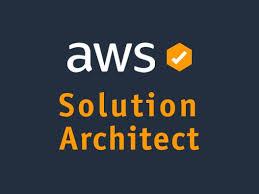
The AWS Certified Solutions Architect – Associate (SAA-C03) certification is one of the most recognized cloud certifications, validating an individual’s ability to design distributed applications on AWS. Understanding key concepts and best practices is crucial for both passing the exam and applying aws solution architect associate in real-world scenarios.
This article will cover core AWS concepts, architectural best practices, and key services essential for the AWS Solution Architect Associate certification.
Understanding AWS Core Concepts
1. AWS Global Infrastructure
AWS provides a scalable and secure cloud environment through:
-
Regions – Geographically isolated areas where AWS resources are deployed.
-
Availability Zones (AZs) – Data centers within a region that provide redundancy and fault tolerance.
-
Edge Locations – Points of presence (PoPs) used for caching and delivering content via AWS CloudFront.
2. Compute Services
-
Amazon EC2 (Elastic Compute Cloud): Virtual servers with scalable configurations.
-
AWS Lambda: Serverless computing service that runs code in response to events.
-
Amazon ECS/EKS: Container orchestration services for managing Docker containers.
-
AWS Auto Scaling: Automatically adjusts capacity based on demand.
3. Storage Services
-
Amazon S3: Scalable object storage with high availability and durability.
-
Amazon EBS: Block storage for EC2 instances, optimized for performance.
-
Amazon EFS: Managed file storage with scalability and durability.
-
Amazon Glacier: Low-cost storage for archival data.
4. Networking and Content Delivery
-
Amazon VPC: Isolated cloud environment where AWS resources run.
-
AWS Route 53: Scalable DNS service for domain registration and routing.
-
Elastic Load Balancing (ELB): Distributes incoming traffic across multiple instances.
-
AWS CloudFront: Content delivery network (CDN) that caches and delivers content from edge locations.
5. Databases
-
Amazon RDS: Managed relational database service (MySQL, PostgreSQL, etc.).
-
Amazon DynamoDB: NoSQL database designed for high-performance applications.
-
Amazon Redshift: Data warehousing service optimized for analytics.
-
Amazon Aurora: High-performance relational database compatible with MySQL and PostgreSQL.
6. Security and Identity Management
-
AWS IAM (Identity and Access Management): Controls permissions and access.
-
AWS KMS (Key Management Service): Encrypts sensitive data.
-
AWS Shield and WAF: Protect against DDoS and web application threats.
-
AWS Organizations and Control Tower: Manage multiple AWS accounts securely.
AWS Architectural Best Practices
1. Designing for Scalability
-
Use Auto Scaling groups to adjust compute resources dynamically.
-
Distribute traffic with Elastic Load Balancer (ELB).
-
Implement caching with Amazon CloudFront and ElastiCache.
2. Ensuring High Availability and Fault Tolerance
-
Deploy applications across multiple Availability Zones.
-
Use AWS Route 53 for DNS failover.
-
Implement multi-region replication for disaster recovery.
3. Cost Optimization Strategies
-
Choose the right pricing model: On-Demand, Reserved Instances, or Spot Instances.
-
Use AWS Cost Explorer and AWS Budgets to monitor spending.
-
Implement Amazon S3 Lifecycle Policies to move infrequently accessed data to Glacier.
4. Security Best Practices
-
Follow the principle of least privilege when setting IAM policies.
-
Enable AWS CloudTrail and AWS Config for auditing.
-
Use Security Groups and Network ACLs to control inbound/outbound traffic.
5. Monitoring and Logging
-
Use Amazon CloudWatch to collect and analyze logs and metrics.
-
Enable AWS CloudTrail to track API activity and changes.
-
Use AWS X-Ray for tracing and debugging applications.
Key AWS Services for Solution Architects
1. Compute and Serverless
-
Amazon EC2: Core compute service with scalable instances.
-
AWS Lambda: Serverless function execution with automatic scaling.
-
Amazon ECS/EKS: Container orchestration services.
2. Storage and Data Management
-
Amazon S3: Secure, scalable object storage.
-
Amazon EBS: Persistent block storage.
-
AWS Backup: Automated backup for AWS services.
3. Networking and Security
-
Amazon VPC: Secure and customizable networking.
-
AWS WAF & Shield: Protection against cyber threats.
-
AWS Direct Connect: Dedicated network connection between AWS and on-premises data centers.
4. Analytics and Machine Learning
-
Amazon Redshift: Scalable data warehousing.
-
AWS Glue: ETL (Extract, Transform, Load) service.
-
Amazon SageMaker: Machine learning service for building, training, and deploying models.
Conclusion
Mastering key AWS concepts and best practices is essential for passing the AWS Solution Architect Associate exam and designing real-world cloud solutions. By understanding core AWS services, following security and cost optimization best practices, and leveraging automation tools, architects can build scalable, resilient, and cost-efficient applications on AWS. Preparing for the certification with hands-on practice, study guides, and mock exams will enhance your expertise and career prospects in cloud computing.





Leave a Reply